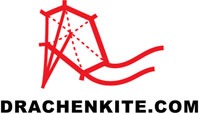Joe Hadzicki
Discourse-Issue-23
In man’s search for usable energy, the journey s tarted with the first spark that led to harnessing fire, and continues toward the hope of nuclear fusion power in the future. Here I’d like to draw from that history and consider how kites may be on the verge of becoming a small part of that story.
First a little history. In the early 1940s Edward Teller was a key scientist on the Manhattan Project. The group’s goal was to produce the first atomic bomb. His work on the Manhattan Project changed the landscape of energy production forever with the advent of nuclear power. Fast forward more than 70 years and his grandson, Astro Teller, is once again redefining the approach to energy production. Where his grandfather once found energy inside an atom, Astro is now looking to the air.
Astro is the director of Google X laboratories, overseeing such projects as Google Glass, the Google driverless car and Project Loon, so finding innovative ways to make futuristic technologies viable is right up his alley. He’s been responsible for spearheading self-driving cars that have since traveled more than a million miles on their own. Now he is trying to bring that same magic to kites. The Makani Power airborne wind turbine power system was acquired by Google X in 2013 and has been on the cutting edge of kite energy ever since.
The idea of generating power using kites is by no means new, so what makes Astro’s approach any different from those who have had little success? In a TED Talk in February of 2016, Astro’s challenge to every employee boiled down to this: If you can figure out how to kill this project, I’ll buy you a beer. By constantly trying to find reasons to kill off projects, the hardest parts get handled first and create more momentum to propel the project forward.
Although the Drachen Foundation has done articles on this subject before, here are three points that show just how special this project is where so many others have failed:
- The U.S. Department of Energy Office of Advanced Research Projects has backed this project.
- Google X has invested more than $15 million dollars over the past few years.
- Google handed the project over to Astro (and he hasn’t been able to break it yet).
What has been accomplished up to this point has been nothing short of impressive. It is a major win for kiting technology to have the likes of Google and the U.S. Department of Energy see potential in this approach. However, the question now is: will the Makani system prove superior to the current wind turbine system, or is it just a niche product for a limited market?
Okay, a little technical detail to help the pieces fit. The “kite” design looks like a small airplane tethered to the “truck- mounted” ground station. Attached to the wings of the kite are eight generators. As the wind drives the “kite” through the air in a circular path, the wind spins the generators which send electrical power down the tether to the ground station. When wind conditions are less than ideal, the kite is stored in a “cradle” on the “truck-mounted” ground station. What’s interesting is that the generators can be reversed and used as motors to fly the device out or retract it back aboard the t ruck when wind conditions are unacceptable.
The Makani system has its pros and cons. On the upside, it is less expensive to build than a typical wind generator. On the downside, with many more moving parts and complexity of the system, the maintenance costs could easily be much higher. Another advantage is the system can be “truck-mounted” which could allow for remote location access, but the space required to operate is significantly larger, which means multiple units would have to be spread over larger distances to generate the same power compared to standard wind generators.
To see the wind generator in action, watch the video at: www.vimeo.com/32162584
The “buzz” is still in the air. Google X is still trying to break it, and the kiting community is behind it.
The verdict? Only time will tell. ◆

